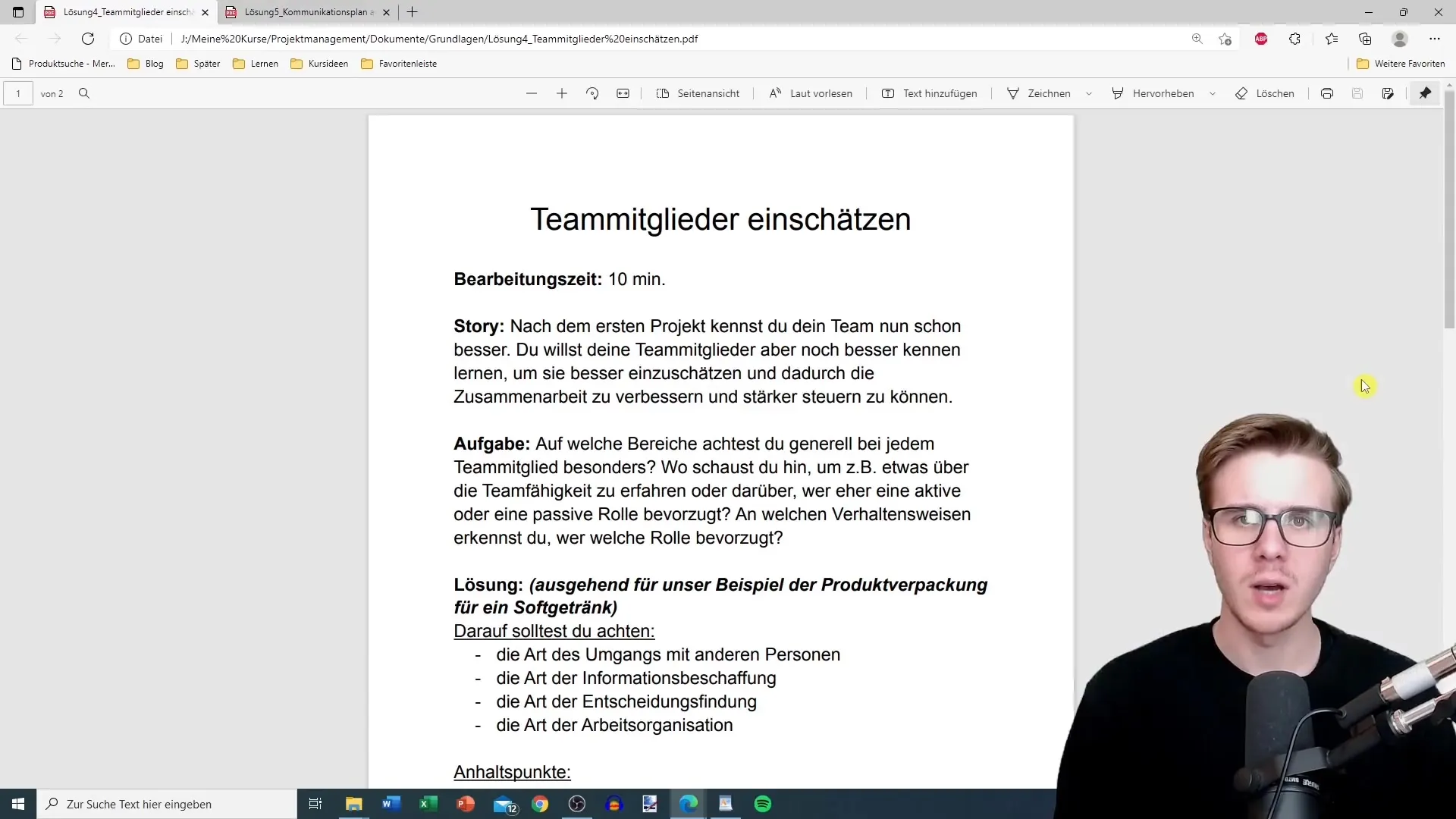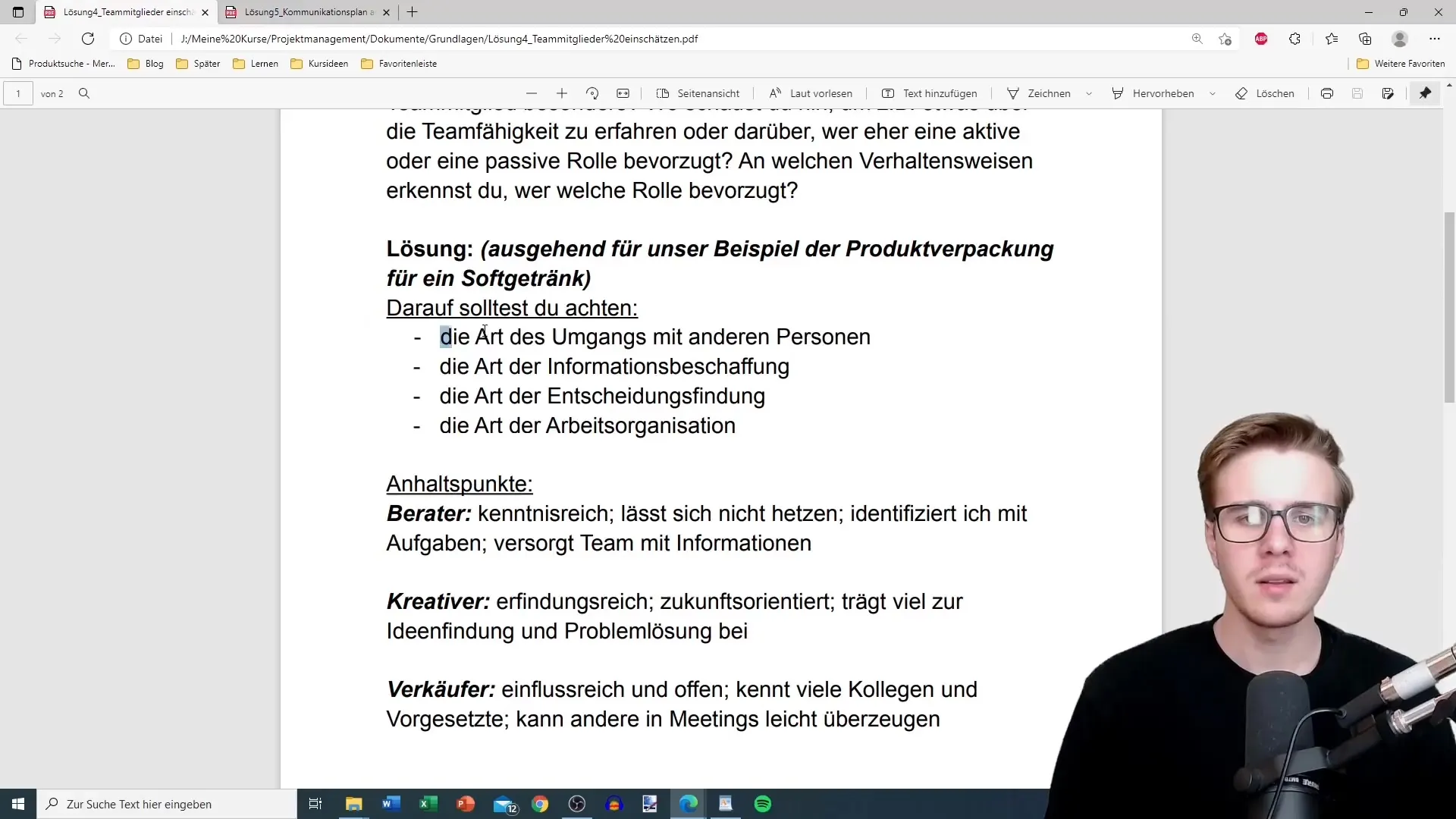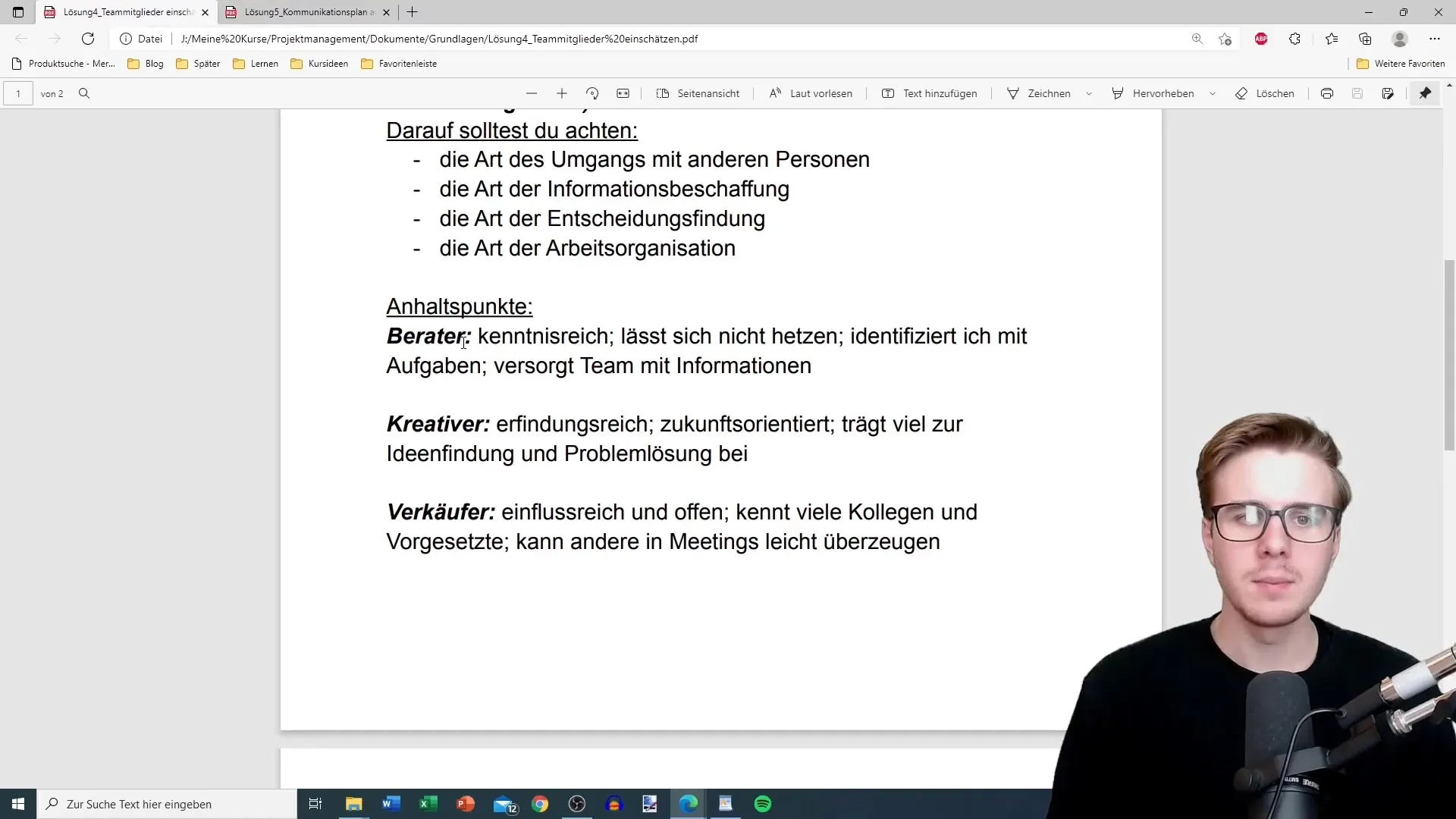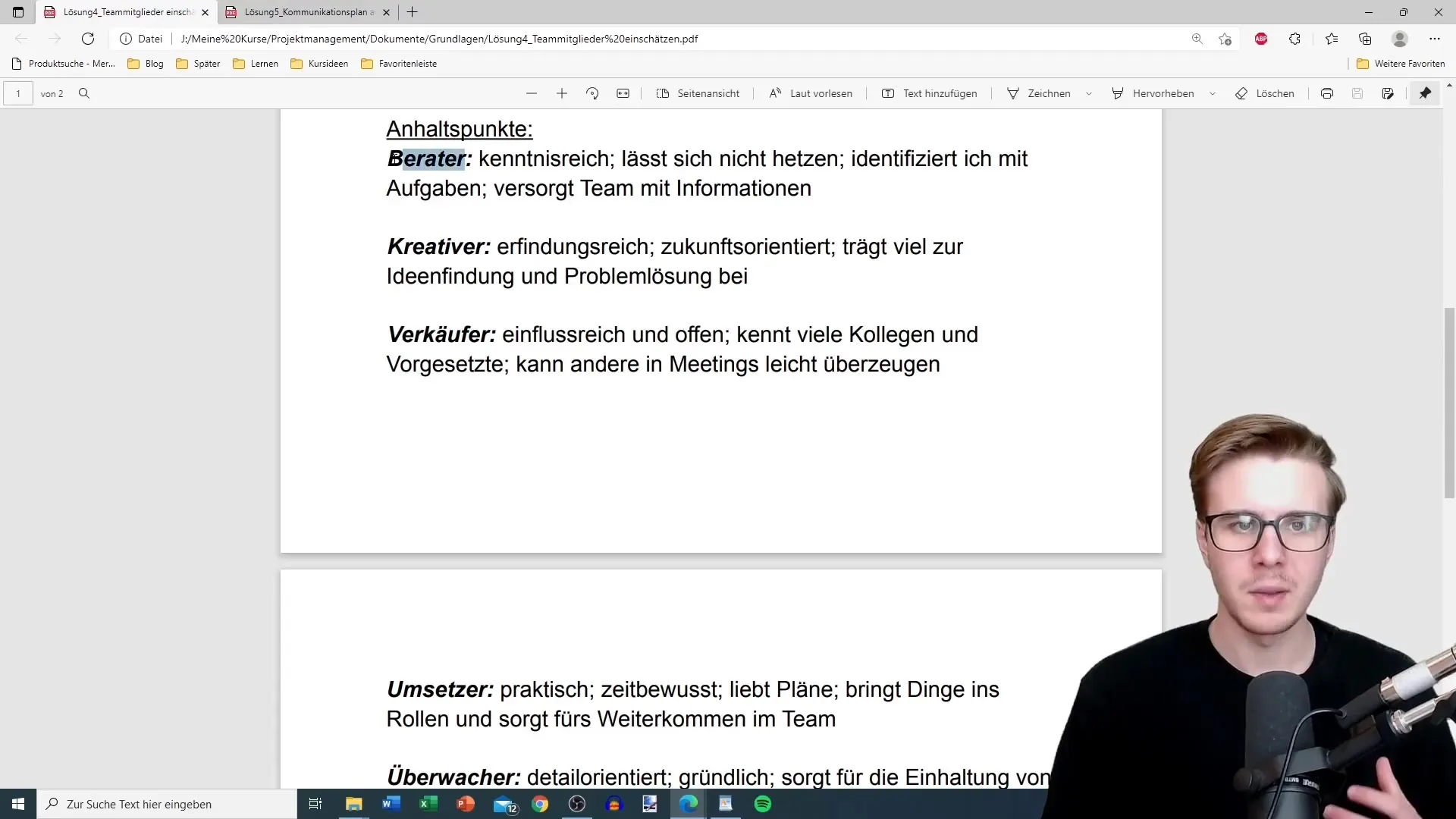Successful teamwork is crucial for the success of a project. A central task is therefore to assess the team members properly. This allows you to identify their strengths and weaknesses and assign roles accordingly. In this guide, you will learn how to capture and categorize various attributes of team members to achieve optimal results. Let's dive right into the key insights before we walk through the assessment process step by step.
Key Insights
To effectively assess the team members, you should consider the following four aspects:
- How does the person interact with others?
- How does the person gather information?
- How does the person make decisions?
- How does the person organize their work?
Furthermore, there are five different categories in which you can classify your team members: Advisor, Creator, Seller, Implementer, and Monitor.
Step-by-Step Guide
1. Analyzing the Way of Interacting with Others
First, you should consider the social skills of your team members. Pay attention to how they communicate and interact with others. Are they more reserved or brimming with ideas? Observations in meetings or project collaborations can provide valuable insights.
2. Understanding the Information Procurement of Team Members
Another essential point is how your team members acquire information. This includes recognizing whether they conduct independent research, gather information through conversations, or utilize good literature. This ability is crucial as it can significantly influence the efficiency of decision-making processes.
3. Analyzing Decision-Making
How do your team members make decisions? Here, you should pay attention to whether they rely on intuition or tend to think analytically. Some individuals may follow gut feelings, while others may weigh risks thoughtfully. Understanding these decision-making processes will help you know how to best utilize their input.
4. Observing Work Organization
Engage with the work styles of each team member. What does their workspace look like? How do they manage their time? Is their approach to work structured or rather chaotic? A close look at these aspects will help you better assess their work style.

5. Assigning Clues to Team Members
Now is the time to consolidate the observations and assign one of the five categories to each team member: Advisor, Creator, Seller, Implementer, or Monitor. Remember that a team member can belong to more than one category. For example, a creative mind may also embody the seller within.

6. Analyzing Team Structure and Balance
After categorizing the team members, examine the overall structure of your team. Do you have a balanced ratio of categories? It is crucial that all necessary skills are represented in the team. If certain types are missing, be open to external support.
7. Ensuring Optimal Task Distribution
Ensure that team members are placed in the right roles based on their strengths and abilities. For instance, it would be inappropriate to assign a creative mind with the implementation of processes if they have little understanding of it. Instead, leverage the strengths of your team members to maximize project successes.

8. Continuous Evaluation and Adaptation
Assessing your team members is not a one-time process. Regularly review their roles and team dynamics. Adjustments may be necessary depending on project progress. Therefore, it is important to be open to changes.

Summary
The proper assessment of your team members is a key factor for the success of your project. Analyze their social skills, information acquisition methods, decision-making processes, and work organization. Assign categories to your team members according to their strengths and adjust task distribution to achieve optimal results.
Frequently Asked Questions
How can I determine if I can classify a team member as a consultant?A consultant usually has extensive knowledge and experience in a specific area and provides support to the team from the background.
Are creatives hard to find?Creatives are often easy to identify as they bring innovative ideas and often look optimistically towards the future.
What should I do if my team is not well balanced?In an unbalanced team, you should consider adding external support or adjusting roles within the team.
How often should I review the team structure?It is advisable to regularly evaluate the team structure, for example after important project phases or milestones, to make adjustments.
Can a team member belong to multiple categories?Yes, a team member can have skills in multiple areas and should be classified into different categories accordingly.


